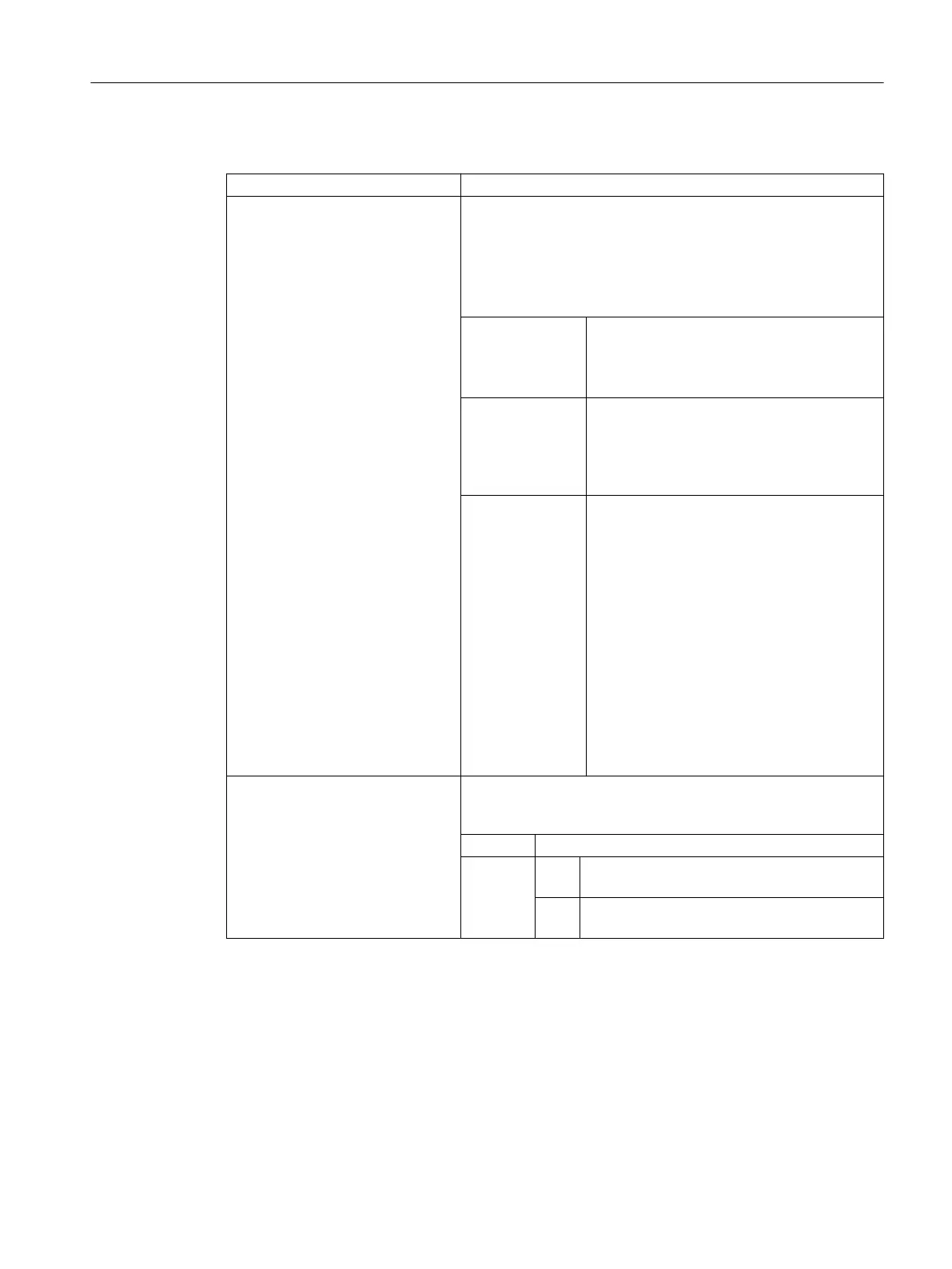Meaning
RET: End of subprogram
<target block>: Declares as jump target the block where program execution
should be resumed.
If parameter <number of return jump levels> is not programmed,
then the jump target is in the program from which the current sub‐
program was called.
Possible data include:
<block number> Number of the target block.
The search for the block number is made in
the program to which a return jump is made -
initially toward the end of the program.
<jump marker> Jump marker, which must be available in the
program into which a return jump is made.
The search for the jump marker is made in the
program to which a return jump is made - ini‐
tially toward the end of the program.
<character
string>
Character string that must be available in the
program into which a return jump is made
(e.g. program or variable name).
The search for the character string is made in
the program to which a return jump is made -
initially toward the end of the program.
The following rules apply when programming
the character string:
● Blank at the end (contrary to the jump
marker, which is identified by ":" at the
end).
● Before the character string only one block
number and/or a jump marker may be
set, no program commands.
<block after target
block>:
The parameter specifies as to whether program processing
should be continued in the block specified under parameter <tar‐
get block> or in the following block.
Type: INT
Value: 0 The return jump is made to the block specified
in parameter <target block>.
> 0 The return jump is made to the next block
specified in parameter <target block>.
Work preparation
3.2 Subprogram technique
NC programming
Programming Manual, 12/2019, 6FC5398-2EP40-0BA0 513

















